Without a doubt, Mt Wellington is the most dominant feature of Hobart. So much so that many people forget to notice it and think about it. Here is some interesting information about Mt Wellington in the early years of the British colony. 1798 – The first record of a European climbing Mt Wellington – was George Bass. Over the next 100 years, the mountain was exploited, with harvesting of timber and stone, hunting animals for food and furs and producing ice. The main timber gathered was wattle, she-oak, stringy bark and blue gum which were used for building and firewood. 1804 – Lt David Collins, who established the Hobart settlement, calls the Mountain ‘Table Mountain’ after the mountain behind Cape Town, South Africa. In his group is Robert Brown who takes a few trips up the mountain to collect plants. 1810 – The first European woman who climbed up the mountain was Salome Pitt, accompanied by a young Aboriginal girl called Miss Story. 1817 – A gang of convict timber cutters was sent out along the rivulet into the lower reaches of Mt Wellington. 1819 – What will the weather be like on the Mountain today? Great question. This is probably best answered by the quote from botanist Alan Cunningham, who in 1819, went up Mt Wellington and recorded the weather as ‘alternately fair, with snowstorms’. Keep this in mind when you pack your gear for a walk on the mountain with us. It’s real. 1822 – When the Duke of Wellington defeated Napoleon Bonaparte at the Battle of Waterloo in 1815, it took a while for that news to spread to the colonies. All the British folk in Hobart were so overjoyed when they finally found out that they changed the name of the mountain to Mt Wellington. 1825 – As the Hobart settlement began to grow and became a colony in its own right, so did its need for more clean water. Work on the canal was begun using convict labour, starting at one of the outlets of the Rivulet near the Milles Track. 1830 – Up until the 1830’s, the village of Fern Tree could only be reached by a rough track. The first Huon Road was built, starting at the Sandy Bay Rivulet, through to Fern Tree and on into the south west. At about this time, Robert Wiggins was busy quarrying slate out of the mountain just below Junction Cabin. The slate was used for the roofs of houses of Hobart Town. 1831 – You can see that Hobart is a very picturesque city, especially with that big, beautiful mountain framing the skyline. John Glover thought so too. He was a painter, who decided at the age of 64 he would retire to Tasmania (or Van Diemen’s Land as it was called at the time). He painted a lot, mostly pictures of Mt wellington and Hobart Town. 1832 – in an area near Junction Cabin called Browns Flats, the government started a sawpit, which was visited by visited by James Backhouse. 1834 – Here is a first for Hobart: the water being piped into Hobart from the Rivulet at the time was being polluted by industry. In an effort to supply clean drinking water, water was piped directly from the Springs, along the Rivulet and into what was called the 1831 diversion. The major polluters were the brewery, the Female Factory and the tannery which this diversion now bypassed. 1836 – Charles Darwin hopped off the Beagle and took a walk up the mountain and the details of this trip feature in his book “The Voyage of the Beagle.”
